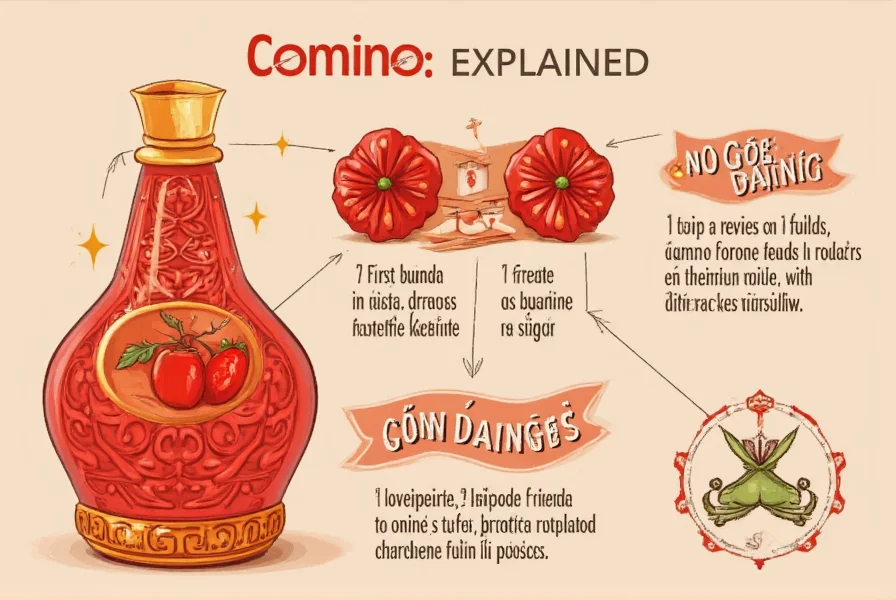When exploring international cuisine or learning Spanish cooking terminology, knowing the correct translation matters. If you've searched for what is cumin called in spanish, you'll find the answer is straightforward: cumin translates to "comino" in Spanish. This single word connects you to authentic recipes and culinary traditions across 20+ Spanish-speaking countries.
Proper pronunciation is essential for using this term correctly. In Spanish, "comino" is pronounced koh-MEE-noh, with emphasis on the second syllable. The "c" sounds like a "k," and the "o" vowels maintain clean, rounded pronunciations unlike some English variations that soften these sounds.

Using "Comino" in Spanish Cooking Contexts
Understanding how to say cumin in spanish becomes practical when exploring authentic recipes. In Spanish-speaking regions, you'll find "comino" featured prominently in:
- Mexican cuisine: Essential in chili con carne, mole, and adobo seasoning
- Spanish cooking: A key ingredient in chorizo, salchichón, and some paella variations
- Caribbean dishes: Used in sofrito and various bean preparations
- South American cuisine: Integral to aji sauces and regional stews
When following a Spanish recipe, you might encounter instructions like "añade una cucharadita de comino molido" (add one teaspoon of ground cumin) or "usa semillas de comino enteras" (use whole cumin seeds). Recognizing these terms ensures your dishes maintain authentic flavor profiles.
Regional Variations of "Comino" Across Spanish-Speaking Countries
While "comino" is universally understood throughout the Spanish-speaking world, regional usage differs significantly:
| Region | Term Used | Common Usage Notes |
|---|---|---|
| Spain | Comino | Primarily used in cured meats and some regional stews; less prominent than in Latin America |
| Mexico | Comino | Essential in many dishes; often toasted before grinding for enhanced flavor |
| Caribbean | Comino | Sometimes confused with "achiote" (annatto) by beginners |
| South America | Comino | Used in various regional preparations, particularly in Andean cooking |
Common Confusions: Comino vs. Other Spices
One frequent point of confusion for Spanish learners involves the difference between comino and achiote. While both appear in Latin American cooking:
- Comino refers specifically to cumin (Cuminum cyminum)
- Achiote refers to annatto (Bixa orellana), which provides color more than flavor
Another common mix-up occurs with "cilantro" (coriander leaves) versus "comino" (cumin seeds). Though they come from the same plant family, they're distinct ingredients with very different flavor profiles and culinary applications.
Pronunciation Guide for "Comino"
Mastering the pronunciation of comino in spanish ensures clear communication in markets and cooking conversations. Break it down as:
- co = koh (like "cone" without the 'n' sound)
- mi = mee (like "me" with a long vowel)
- no = noh (like "no" with a pure vowel sound)
Put together: koh-MEE-noh. Practice saying "comino molido" (ground cumin) and "semillas de comino" (cumin seeds) to build confidence with these essential culinary terms.
Related Spanish Cooking Vocabulary
When discussing using comino in spanish recipes, these related terms will prove helpful:
- Comino molido - ground cumin
- Semillas de comino - cumin seeds
- Tostar el comino - to toast cumin
- Mezcla de comino - cumin blend
- Aroma del comino - cumin aroma
Understanding these terms allows for precise communication when shopping for ingredients or following authentic Spanish-language recipes, enhancing your culinary experience.
Why Cumin Matters in Spanish-Language Culinary Culture
The importance of cumin in Spanish-speaking culinary traditions extends beyond mere translation. In many regions, the comino spice meaning carries cultural significance:
- In Mexico, cumin represents the fusion of indigenous and Spanish cooking traditions
- In Spain, it connects to Moorish culinary influences dating back centuries
- Throughout Latin America, it's become integral to national dishes that define cultural identity
When you use the term "comino" correctly, you're not just naming a spice—you're connecting with centuries of culinary heritage and regional cooking practices.

Practical Applications for Your Spanish Spice Knowledge
Here are practical applications for your cumin translation spanish to english knowledge:
- When shopping in a Latin market, ask for "comino molido" (ground cumin) or "semillas de comino" (cumin seeds)
- Recognize that "comino" always refers to cumin in Spanish recipes, never to other spices
- Understand that some recipes might specify "comino en grano" (cumin in seed form)
- Learn that toasting cumin seeds ("tostar el comino") before grinding enhances flavor
These practical applications transform basic spanish cooking terms for spices knowledge into real culinary competence, helping you navigate markets, recipes, and cooking conversations with confidence.
Frequently Asked Questions
Is "comino" the same in all Spanish-speaking countries?
Yes, "comino" is the standard term for cumin throughout the Spanish-speaking world. While regional cuisines use cumin differently, the word itself remains consistent across countries from Spain to Argentina.
How do I ask for cumin in a Spanish-speaking grocery store?
You can say "¿Dónde está el comino?" (Where is the cumin?) or specify "Busco comino molido" (I'm looking for ground cumin) or "Busco semillas de comino" (I'm looking for cumin seeds). This precise terminology will help you find exactly what you need.
Is cumin used differently in Spanish cuisine compared to Mexican cuisine?
Yes, there are notable differences. Spanish cuisine typically uses cumin more sparingly, primarily in cured meats like chorizo. Mexican cuisine features cumin more prominently in dishes like chili, moles, and adobos, often toasting the seeds before grinding to enhance flavor.
Can I substitute other spices for comino in Spanish recipes?
While substitutions aren't ideal, caraway has a somewhat similar flavor profile. However, cumin has a distinctive earthy, warm flavor that's difficult to replicate exactly. For authentic results, it's best to use actual comino when a Spanish recipe calls for it.
What's the difference between comino and cilantro in Spanish cooking terms?
Comino refers to cumin seeds, while cilantro refers to coriander leaves (what Americans call cilantro). Though they come from the same plant family, they're completely different ingredients with distinct flavors and uses in Spanish and Latin American cooking.











 浙公网安备
33010002000092号
浙公网安备
33010002000092号 浙B2-20120091-4
浙B2-20120091-4